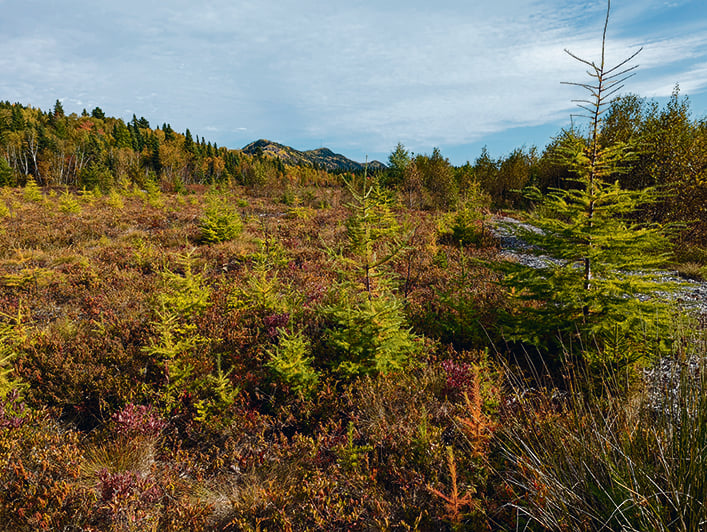The industry says it consults with local rural communities to create jobs and apply post-harvest restorative practices
Many gardeners look to peat moss as a staple for their seasonal growing. Where does this peat come from? Are there local alternatives that are more environmentally sound?
The peat that comes out of Canada’s peat bogs is sphagnum moss. It is used in the horticulture, floriculture, greenhouse, cannabis and home garden industries. It can be mixed into soil blends or formed into seedling pots, pucks or liners for hanging plants. It offers a little acidity and fluffiness to soil mixes and has high moisture retention.
About 11.8 million cubic metres of peat are harvested a year from Canadian wetlands and shipped to the United States for processing. Then it is distributed back into Canada and throughout North America. The demand is high and Canadian peat harvesters can’t keep up.
Peat lands exist across Canada. They make up 13 percent of the nation’s total land mass. According to the Canadian Sphagnum Peat Moss Association (CSPMA), there are active peat harvest sites in most provinces.
A horticulturist couldn’t find a more local soil amendment than that.
The environmentally sound harvesting practices are the top of mind for the CSPMA.
“Thirty years ago, foreseeing… what could happen in North America, seeing what was happening in Europe, the Canadian industry decided to invest in science and research,” said Marie-Claire LeBlanc, CSPMA’s peat land affairs manager. “This is where they decided to develop best management practices, including and mostly focusing on peatland restoration.”
Since the CSPMA’s formation 35 years ago, industry-wide regulations were started on responsible harvesting and restoration practices.

Representing 14 peat harvesting operations across Canada, CSPMA helps co-ordinate the industry by consulting with local rural communities, including Indigenous communities, to create local job opportunities and to apply their post-harvest restorative practices.
It can take years to get the legislation in place to open a new peat bog.
When this happens, Leblanc said, “In order to harvest the peat, when we open a bog, we take the (living) vegetation out. We usually use that vegetation to restore other bogs because there’s a big value to that material. Then we have to drain the bogs and harvest it with vacuum harvesters.”
Peat lands are in three states of condition: pristine bog, bogs in harvest and bogs that are in various stages of restoration.
“In general, we’re using the moss layer transfer technique.… We go into a pristine peat land and we collect donor material that we spread over the peatland that has to be restored and we restore the hydrology of the sites by blocking the drainage ditches,” said Leblanc.

Even with the high demand, only 0.03 percent of Canada’s peat bogs have been touched in the last 30 years.
“For the last 30 years, the industry has been working with science expertise across Canada and universities to better understand peat land science, best management practices and how to manage the resource responsibly and the impact on the resource,” said Asha Hingorani, president of CSPMA.
There are alternatives to peat moss, such as coco core, but “if you think about where coco coir comes from, the transport, the water that’s (used) to clean that material has to be taken into consideration when you’re thinking about sustainability,” Hingorani said, adding that peat harvested in Canada, processed and packed in the U.S. is more local and sustainable.
Hingorani said provincial and federal governments are looking to conserve 30 percent of Canada’s peat land through co-op agreements.

















